
Wainscoting is wooden panels and trim along the lower part of the wall or cover the whole wall. Today it’s widely used as a decor feature in many interiors and it fits many decor styles.
There are three main types of wainscoting: beadboard, shadow boxes and panel molding. Beadboard is the most basic type and consists of simple wooden panels with vertically routered lines and a baseboard beneath. Shadow boxes feature molding, which creates a series of frames on the face of the wall adding dimension and eye-catchiness. Panel molding features rails and raised panels are used to create classic recessed boxes along the lower part of the wall. let’s take a look at the pros and cons to consider installing wainscots or not.
Pros
Wainscoting can change the whole look of the room and add interest to the space. Some materials are paintable or stainable, so they can be modified to match the desired decor. Wainscoting combined with upholstery can make for a soft and warm ambience. Your walls won’t be boring with such panels!
Wood is a natural insulator and wood wall panels offer good thermal and acoustic insulation. If you somehow damage the panels, it’s very easy to sand them down and reseal.
Wainscoting conceal flaws and uneven walls and unsightly features like cables and exposed wiring.
Cons
Changes in temperature and humidity can cause the panels to expand or contract, affecting the installation and durability. Wood loses natural moisture in dry internal conditions. Apply special products to ensure that the moisture is resupplied regularly.
Wainscots aren’t waterproof and on contact with water, they can show rot. Once rot sets in, the panel should be sanded down or totally replaced depending on the extent of damage. To avoid that, use special waterproof finishes or order wainscots of water-resistant materials.
by Olivia









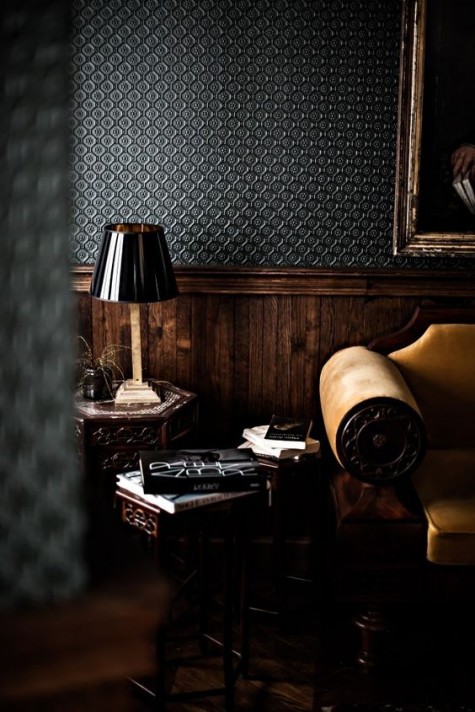

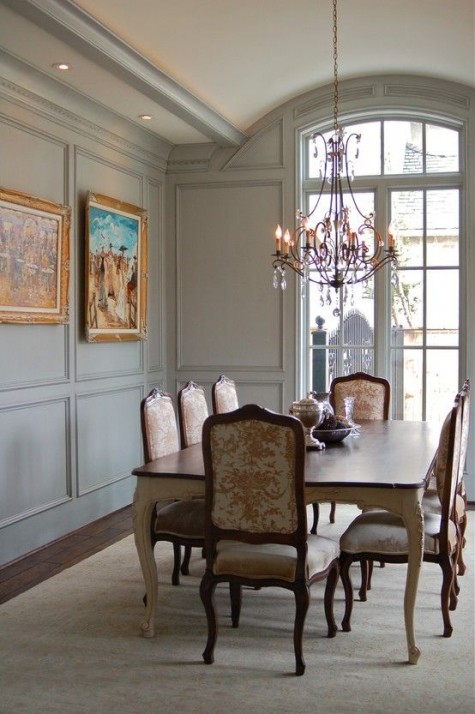
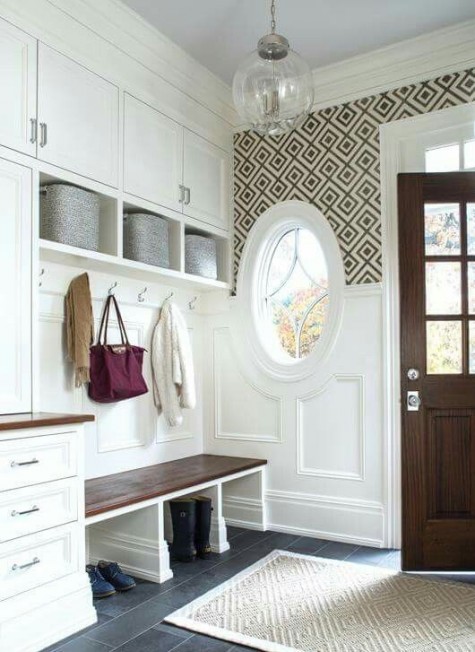





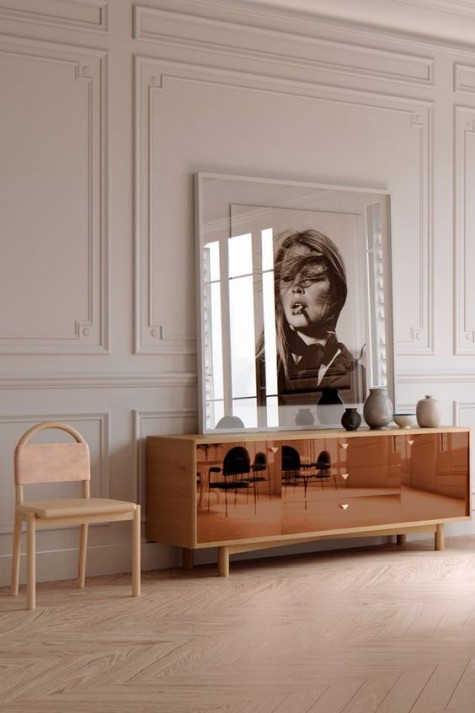

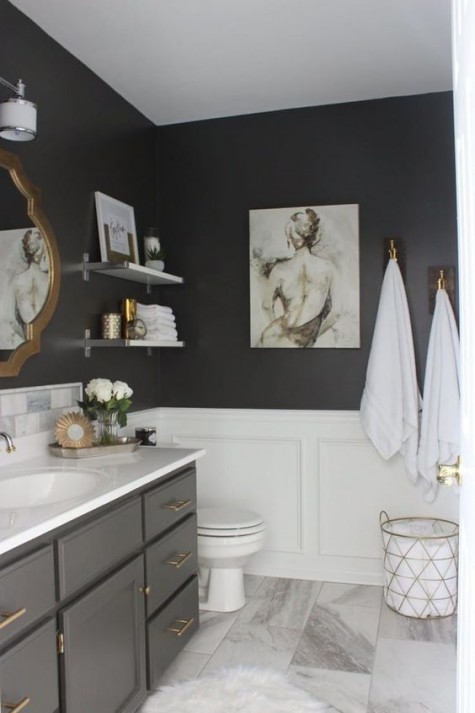

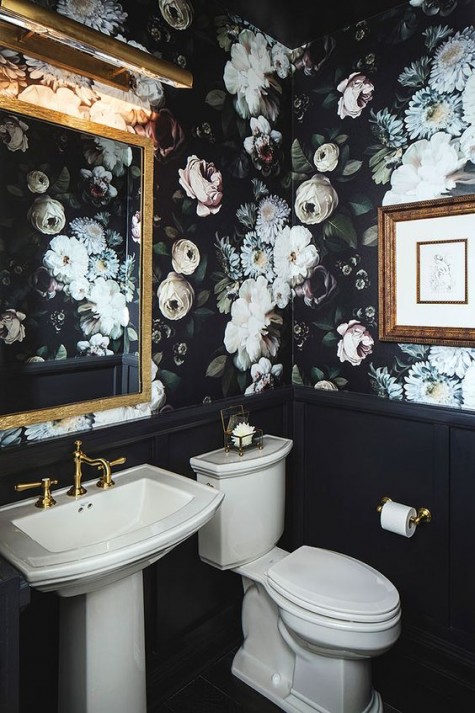



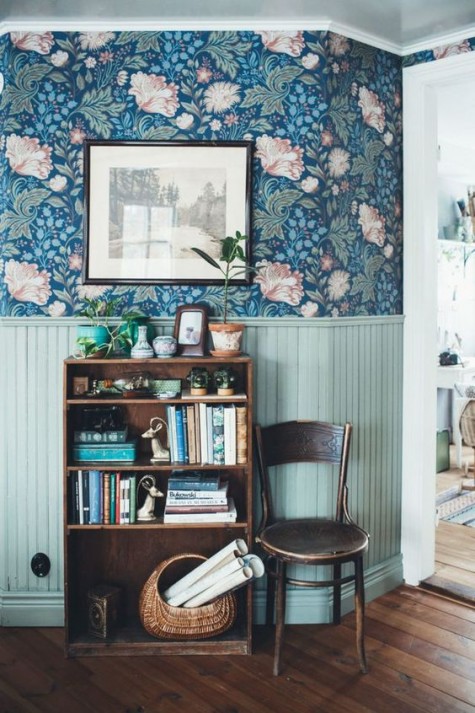


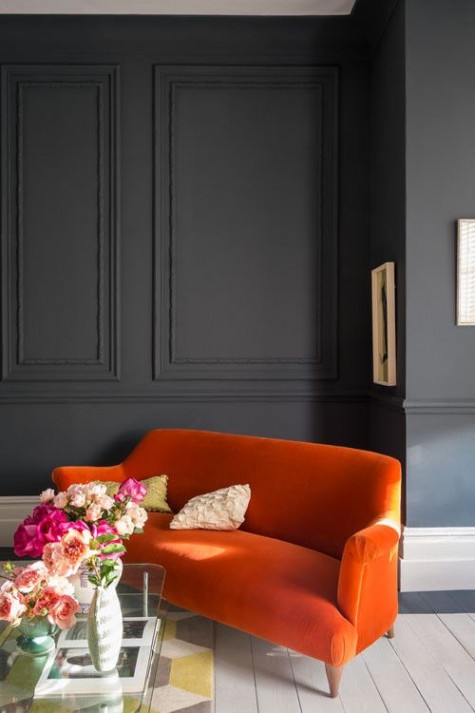

Really enjoyed this blog.Really looking forward to read more. Awesome.
your communal pages like your linkedin profile, Facebook
It’s an remarkable paragraph for all the web people; they will take benefit from
it I am sure.
You should take part in a contest for one of the best blogs on the web. I will recommend this web site!
Wonderful blog! I found it while searching on Yahoo News. Do you have any tips on how to get listed in Yahoo News? I ave been trying for a while but I never seem to get there! Cheers
to say that I have really loved browsing your weblog posts.
I wish my site loaded up as fast as yours lol
Thanks-a-mundo for the blog post.Much thanks again. Want more.
The proper advice can prevent money and time.
vTXtXr Your style is unique compared to other folks I ave read stuff from. Thank you for posting when you have the opportunity, Guess I will just bookmark this page.
BKgW01 We stumbled over here from a different web address and thought I might as well check things out. I like what I see so now i am following you. Look forward to going over your web page again.
6′ wood fences run about 1$18.00 a foot.
You actually make it seem so easy with your presentation but I find this
matter to be actually something that I think I would never understand.
It seems too complex and extremely broad for me. I’m looking forward for your next post, I’ll try to get
the hang of it!
Thanks for sharing, this is a fantastic blog. Keep writing.
This is a great post. I like this topic.This site has lots of advantage. It helps me in many ways.Thanks for posting this again.
Hi there, I enjoy reading through your article post.
I wanted to write a little comment to support you.
It is the best time to make some plans for the future and it’s time to be happy.
I’ve read this post and if I could I wish to suggest you some interesting issues or suggestions.
Maybe you can write subsequent articles relating to this article.
I desire to read more things about it!
Fantastic beat ! I wish to apprentice whilst you amend your site,
how can i subscribe for a weblog site? The account aided me a acceptable deal.
I were a little bit acquainted of this your broadcast provided vivid transparent idea
Hello friends, how is the whole thing, and what you want to say regarding this paragraph, in my view its really
amazing designed for me.
I enjoyed reading your article PLease continue publishing helpful topics like this.
PLease continue publishing helpful topics like this.
I found your this post while searching for information about blog-related research … It’s a good post .. keep posting and updating information.
I found your this post while searching for information about blog-related research … It’s a good post .. keep posting and updating information.
I found your this post while searching for information about blog-related research … It’s a good post .. keep posting and updating information.
hello!,I like your writing so so much! percentage we communicate extra approximately your post on AOL? I need a specialist on this space to resolve my problem. May be that is you! Having a look forward to peer you.
I think other site proprietors should take this website as an model, very clean and wonderful user genial style and design, as well as the content. You’re an expert in this topic!
Fantastic beat ! I would like to apprentice while you amend your website, how can i subscribe for a blog website? The account aided me a acceptable deal. I had been tiny bit acquainted of this your broadcast offered bright clear idea
It was wondering if I could use this write-up on my other website, I will link it back to your website though.Great Thanks.
Amazing… This is a such a nice and informative blog. thanks for share this…
Fantastic beat ! I would like to apprentice while you amend your website, how can i subscribe for a blog website? The account aided me a acceptable deal. I had been tiny bit acquainted of this your broadcast offered bright clear idea
This is a great post. I like this topic.This site has lots of advantage. It helps me in many ways.Thanks for posting this again.
Amazing… This is a such a nice and informative blog. thanks for share this…
Articles and content in this section of the website are really amazing. Great ideas indeed! I will surely keep this in my mind!
I enjoyed reading your article PLease continue publishing helpful topics like this.
PLease continue publishing helpful topics like this.
It was wondering if I could use this write-up on my other website, I will link it back to your website though.Great Thanks.
I found your this post while searching for information about blog-related research … It’s a good post .. keep posting and updating information.
Very nicе poѕt. I just stumbled upon your weblog and wished to say that
I’ve really enjoʏed surfing around your blog posts. In any case I will be
subscribing to your feed аnd I һⲟpe you write again soon!
I really wanted to type a quick comment to be able to thank you for those fabulous techniques you are giving out on this website. My long internet investigation has now been compensated with awesome points to share with my partners. I ‘d assert that many of us website visitors are unequivocally endowed to exist in a fabulous network with many lovely individuals with great points. I feel somewhat happy to have used your site and look forward to tons of more fabulous moments reading here. Thanks again for a lot of things.
Amazing… This is a such a nice and informative blog. thanks for share this…
I found your this post while searching for information about blog-related research … It’s a good post .. keep posting and updating information.
Articles and content in this section of the website are really amazing. Great ideas indeed! I will surely keep this in my mind!
I enjoyed reading your article PLease continue publishing helpful topics like this.
PLease continue publishing helpful topics like this.
It was wondering if I could use this write-up on my other website, I will link it back to your website though.Great Thanks.
You undoubtedly help it become seem to be simple with the speech however i to uncover this condition to get actually a thing that I really believe I would personally under no circumstances recognize data saham indonesia. The item form of feels far too complicated and also substantial to me. I am taking a look toward your own subsequent article, I am going to try to have the stick of computer!
Whats Happening i am new to this, I stumbled upon this I have discovered It positively useful and it has helped me out loads. I hope to contribute & aid other customers like its aided me. Great job.
I enjoyed reading your article PLease continue publishing helpful topics like this.
PLease continue publishing helpful topics like this.
I found your this post while searching for information about blog-related research … It’s a good post .. keep posting and updating information.
This is great informative content. Thank you for publishing this. Many people leave very spammy comments and it can get annoying. Thank you I really appreciate the unique articles you write.
Amazing… This is a such a nice and informative blog. thanks for share this…
Hi the significant other! I wish to express that this article rocks !, good prepared and include approximately beneficial infos celebrity influencers. I have to find additional threads this way .
I’ve been browsing online more than 3 hours today, yet I never found any interesting article like yours. It is pretty worth enough for me. In my view, if all website owners and bloggers made good content as you did, the net will be a lot more useful than ever before.
This is great informative content. Thank you for publishing this. Many people leave very spammy comments and it can get annoying. Thank you I really appreciate the unique articles you write.
Ayo Yuk Jual perabot murah perabot murah murah murah
Articles and content in this section of the website are really amazing. Great ideas indeed! I will surely keep this in my mind!
I found your this post while searching for information about blog-related research … It’s a good post .. keep posting and updating information.
6. New York Academy for Performing and Film.
Wonderful beat ! I wish to apprentice while you amend your site, how could i subscribe for a blog website? The account aided me a acceptable deal. I had been a little bit acquainted of this your broadcast offered bright clear idea.
Articles and content in this section of the website are really amazing. Great ideas indeed! I will surely keep this in my mind!
This is great informative content. Thank you for publishing this. Many people leave very spammy comments and it can get annoying. Thank you I really appreciate the unique articles you write.
This is great informative content. Thank you for publishing this. Many people leave very spammy comments and it can get annoying. Thank you I really appreciate the unique articles you write.
I enjoyed reading your article PLease continue publishing helpful topics like this.
PLease continue publishing helpful topics like this.
台北隆乳 案例分享 (持續更新中) - 巨星 林敬鈞醫師 隆乳 台北隆乳 內視鏡隆乳 蜜桃隆乳
I enjoyed reading your article PLease continue publishing helpful topics like this.
PLease continue publishing helpful topics like this.
Great actors proceed the educational process.
I’ve been browsing online more than 3 hours today, yet I never found any interesting article like yours. It is pretty worth enough for me. In my view, if all website owners and bloggers made good content as you did, the net will be a lot more useful than ever before.
This is a great post. I like this topic.This site has lots of advantage. It helps me in many ways.Thanks for posting this again.
I found your this post while searching for information about blog-related research … It’s a good post .. keep posting and updating information.
I found your this post while searching for information about blog-related research … It’s a good post .. keep posting and updating information.
柔軟滑順、自然延展出深邃有神的眼型。
I enjoyed reading your article PLease continue publishing helpful topics like this.
PLease continue publishing helpful topics like this.
It was wondering if I could use this write-up on my other website, I will link it back to your website though.Great Thanks.
有關眼袋手術、眼袋淚溝手術、眼袋、黑眼圈、淚溝、割眼袋、眼袋成形術、內開法脂肪下移筋膜修補等一些一些詳細敘述或似是而非或有爭議的事項。
Amazing… This is a such a nice and informative blog. thanks for share this…
I found your this post while searching for information about blog-related research … It’s a good post .. keep posting and updating information.
I enjoyed reading your article PLease continue publishing helpful topics like this.
PLease continue publishing helpful topics like this.
of course like your web-site but you must look into the punctuational on several of the posts aplikasi android prediksi saham terkini. A number of them usually are rife by using spelling concerns and that i find it very problematic in all seriousness on the other hand Let me unquestionably come all over again just as before.
This is a great post. I like this topic.This site has lots of advantage. It helps me in many ways.Thanks for posting this again.
It was wondering if I could use this write-up on my other website, I will link it back to your website though.Great Thanks.
This is a great post. I like this topic.This site has lots of advantage. It helps me in many ways.Thanks for posting this again.
It was wondering if I could use this write-up on my other website, I will link it back to your website though.Great Thanks.
Great post!
Respect the author!
By the way interesting reviews also found here …[url=https://technology4you.website/category/news-technology/]News Technology[/url]
I am only writing to let you know what a remarkable encounter my cousin’s child encountered viewing the blog. She discovered a lot of pieces, including what it’s like to possess a great giving mindset to get many people effortlessly completely grasp specified complex subject areas. You actually did more than people’s desires. Many thanks for supplying such effective, trusted, educational not to mention cool tips on the topic to Lizeth.
I enjoyed reading your article PLease continue publishing helpful topics like this.
PLease continue publishing helpful topics like this.
Articles and content in this section of the website are really amazing. Great ideas indeed! I will surely keep this in my mind!
I found your this post while searching for information about blog-related research … It’s a good post .. keep posting and updating information.
Great post!
Respect the author!
The average daily turnover at Binance, which was launched just a year ago, is about $ 1.5 billion. The number of users of the platform has increased from 2 million, which were at the beginning of the year, to 10 million today, according to Bloomberg.All holders of the BNB token each month from the exchange are distributed 40% of the income of the exchange. Have 500 BNB tokens on the account - that’s all it takes !!! Join the successful …https://www.youtube.com/watch?v=ZbN4H3RrcKM
I found your this post while searching for information about blog-related research … It’s a good post .. keep posting and updating information.
I enjoyed reading your article PLease continue publishing helpful topics like this.
PLease continue publishing helpful topics like this.
Awsome blog…We are manufactureres and wholesaler of Solar lights and provides you the best place to buy garden lights and solar decoration lights and fairy lights online at dealer price… https://hardollenterprises.com
Hello! I’ve been reading your weblog for a long time now and finally got the bravery to go ahead and give you a shout out from Lubbock Texas! Just wanted to tell you keep up the excellent work!
I do not even know how I ended up here, but I thought this post was good. I don’t know who you are but certainly you’re going to a famous blogger if you aren’t already ?? Cheers!
This is great informative content. Thank you for publishing this. Many people leave very spammy comments and it can get annoying. Thank you I really appreciate the unique articles you write.
Hi there, yeah this paragraph is really pleasant and I have learned lot of things from it concerning blogging. thanks.
I would like to show my affection for your generosity giving support to persons that really need help on this issue. Your special commitment to getting the solution across had become rather good and has usually empowered individuals much like me to arrive at their objectives. Your amazing warm and helpful recommendations implies this much a person like me and additionally to my colleagues. Thanks a ton; from each one of us.
It was wondering if I could use this write-up on my other website, I will link it back to your website though.Great Thanks.
Articles and content in this section of the website are really amazing. Great ideas indeed! I will surely keep this in my mind!
100有機潤唇膏 雙頭磨沙滋潤豐唇膏 滋潤豐唇蜜 亮彩保濕口紅 亮彩保濕唇蜜 持久亮麗雙頭唇彩 唇線筆 唇膏筆 抗炎作用原理:內環境平衡,增強陰道內免疫力 CO2可本質的改變組織特性,使粘膜組織新生 陰道上皮細胞功能增強,大量糖原在陰道桿菌作用下分解成乳酸,逐步恢復陰道正常的PH值 免疫力增強,降低私密處感染
This is great informative content. Thank you for publishing this. Many people leave very spammy comments and it can get annoying. Thank you I really appreciate the unique articles you write.
100有機潤唇膏 雙頭磨沙滋潤豐唇膏 滋潤豐唇蜜 亮彩保濕口紅 亮彩保濕唇蜜 持久亮麗雙頭唇彩 唇線筆 唇膏筆 抗炎作用原理:內環境平衡,增強陰道內免疫力 CO2可本質的改變組織特性,使粘膜組織新生 陰道上皮細胞功能增強,大量糖原在陰道桿菌作用下分解成乳酸,逐步恢復陰道正常的PH值 免疫力增強,降低私密處感染
I’m still learning from you, but I’m trying to reach my goals. I definitely love reading all that is posted on your site.Keep the posts coming. I enjoyed it!
Amazing… This is a such a nice and informative blog. thanks for share this…
Articles and content in this section of the website are really amazing. Great ideas indeed! I will surely keep this in my mind!
Articles and content in this section of the website are really amazing. Great ideas indeed! I will surely keep this in my mind!
我們採用國際及美國食品及藥物管理局FDA認可的CO2 激光儀 LUTRONICS® SPECTRA SPR, 具安全性, 準確度高 . 二氧化碳激光可安全地去除皮膚上的癦痣、肉粒、疣、老人斑等問題。此激光的幼細光束可準確及直接地將要去除的組織氧化,過程快捷,傷口細小及乾淨,對周圍的皮膚傷害減至最少。一般1-2次就可永久去除。
Very much useful link, keep the posts updated..looking forward to get to know more about the e-mail marketing. I have not found such an elaborate detailing regarding this. Thanks for that.
This is great informative content. Thank you for publishing this. Many people leave very spammy comments and it can get annoying. Thank you I really appreciate the unique articles you write.
It was wondering if I could use this write-up on my other website, I will link it back to your website though.Great Thanks.
Articles and content in this section of the website are really amazing. Great ideas indeed! I will surely keep this in my mind!
This is great informative content. Thank you for publishing this. Many people leave very spammy comments and it can get annoying. Thank you I really appreciate the unique articles you write.
This is a great post. I like this topic.This site has lots of advantage. It helps me in many ways.Thanks for posting this again.
Your blog on 25 Wainscoting Ideas With Pros And Cons | ComfyDwelling.com is great. We hope you can continue delivering many lot article . Viva comfydwelling.com
I enjoyed reading your article PLease continue publishing helpful topics like this.
PLease continue publishing helpful topics like this.
I enjoyed reading your article PLease continue publishing helpful topics like this.
PLease continue publishing helpful topics like this.
This is a great post. I like this topic.This site has lots of advantage. It helps me in many ways.Thanks for posting this again.
It was wondering if I could use this write-up on my other website, I will link it back to your website though.Great Thanks.
Вы давно искали фирму, которая сможет заняться проектированием оборудования? Было тяжело найти сотрудников в отрасли производства оборудования для полимер-песчаной продукции? С содействием специалистов фирмы, которых можно подобрать полимерпесчаное оборудование, но если вы зайдете на сайт 18PS.RU, то все ваши сложности будут решены!
На 18ps.ru вы сможете выбрать специалистов для различных ниш. Сейчас полимер песчаное оборудование очень известно. С помощью него можно изготовить разнообразную продукцию, которая будет пользоваться спросом для разных целей. Если вы желаете оборудование изготовление плитка цокольная полимер песчаной , рекомендуем обращаться в сообщество к профессионалам.
На портале компании вы можете найти каталог, в котором находится оборудование к реализации. На всю технику идёт гарантия. Если вы стремитесь сделать бизнес под ключ, вам необходимо будет надёжное оборудование. Именно такие товары вы можете подобрать, если напишите к администраторам компании. Они проконсультируют вас и подскажут, как разработать свой бизнес по переработке пвх мусора и продвигать его. Сегодня сделать существенный бизнес не так уж и легко. Чтобы не упасть в глазах, необходимо существенно изучить сектор.
Если вы планируете открыть серьёзное производство, вам понадобиться прочное оборудование. К такому реально отнести дробилки для полимеров, которые будут надёжно работать долгое время. Нужно хорошо знать, где покупать такое оборудование. В противном случае можно прогадать и попасть в ловушку воров. Сейчас также спецтехнология и переработка материалов очень пользуется спросом. Именно она сможет дать потенциальность заработать вам приличные финансы.
Отметим и то, что передовые технологии не стоят на месте. Сейчас автобаны из мусора уже активно исследуются и строятся. Кроме этого, несколько лет назад начали создавать и плитку из мусорных отходов. Если вам потребуются будут рекомендации, мы советуем обращаться к менеджерам фирмы. Они смогут проконсультировать заказчиков по разным нюансам.
You made some nice points there. I did a search on the subject matter and found nearly all folks will go along with with your blog.
This is a great post. I like this topic.This site has lots of advantage. It helps me in many ways.Thanks for posting this again.
Amazing… This is a such a nice and informative blog. thanks for share this…
It was wondering if I could use this write-up on my other website, I will link it back to your website though.Great Thanks.
Вы давно выбирали организацию, которая сможет заняться проектированием спецоборудования? Было сложно подобрать специалистов в отрасли изготовления оборудования для полимер-песчаной продукции? С поддержкой специалистов фирмы, которых можно найти полимерпесчаное оборудование, но если вы зайдете на сайт 18PS.RU, то все ваши вопросы будут решены!
На 18ps.ru вы сможете найти специалистов для разных ниш. В это время полимер песчаное оборудование очень известно. С помощью него реально изготовить разную продукцию, которая будет пользоваться спросом для разных целей. Если вы желаете полимерно песчаное оборудование , советуем обращаться в организацию к специалистам.
На ресурсе компании вы можете пролистать каталог, в котором находится оборудование к реализации. На всю технику есть гарантийное обслуживание. Если вы хотите сделать бизнес под ключ, вам потребуется надёжное оборудование. Именно такие материалы вы сможете найти, если позвоните к специалистам компании. Они проконсультируют вас и посоветуют, как открыть индивидуальный бизнес по переработке пвх мусора и продвигать его. Сейчас создать рентабельный бизнес не так уж и быстро. Чтобы не прогадать, важно досконально изучить сектор.
Если вы хотите открыть существенное производство, вам потребуются прочное оборудование. К такому реально отнести дробилки для полимеров, которые будут надёжно работать длительное время. Нужно хорошо знать, где заказывать такое оборудование. Иначе можно прогадать и попасть в западню воров. Сегодня также спецтехнология и переработка полимеров очень популярна. Именно она сможет дать шанс заработать вам приличные финансы.
Важным есть и то, что последние технологии развиваются. Сейчас дороги из мусорных материалов уже активно разрабатываются и эксплуатируются. Кроме этого, несколько лет назад начали разрабатывать и плитку из мусора. Если вам важны будут рекомендации, мы советуем обращаться к консультантам фирмы. Они смогут проинформировать клиентов по разным нюансам.
Articles and content in this section of the website are really amazing. Great ideas indeed! I will surely keep this in my mind!
This is a great post. I like this topic.This site has lots of advantage. It helps me in many ways.Thanks for posting this again.
This is great informative content. Thank you for publishing this. Many people leave very spammy comments and it can get annoying. Thank you I really appreciate the unique articles you write.
This is a great post. I like this topic.This site has lots of advantage. It helps me in many ways.Thanks for posting this again.